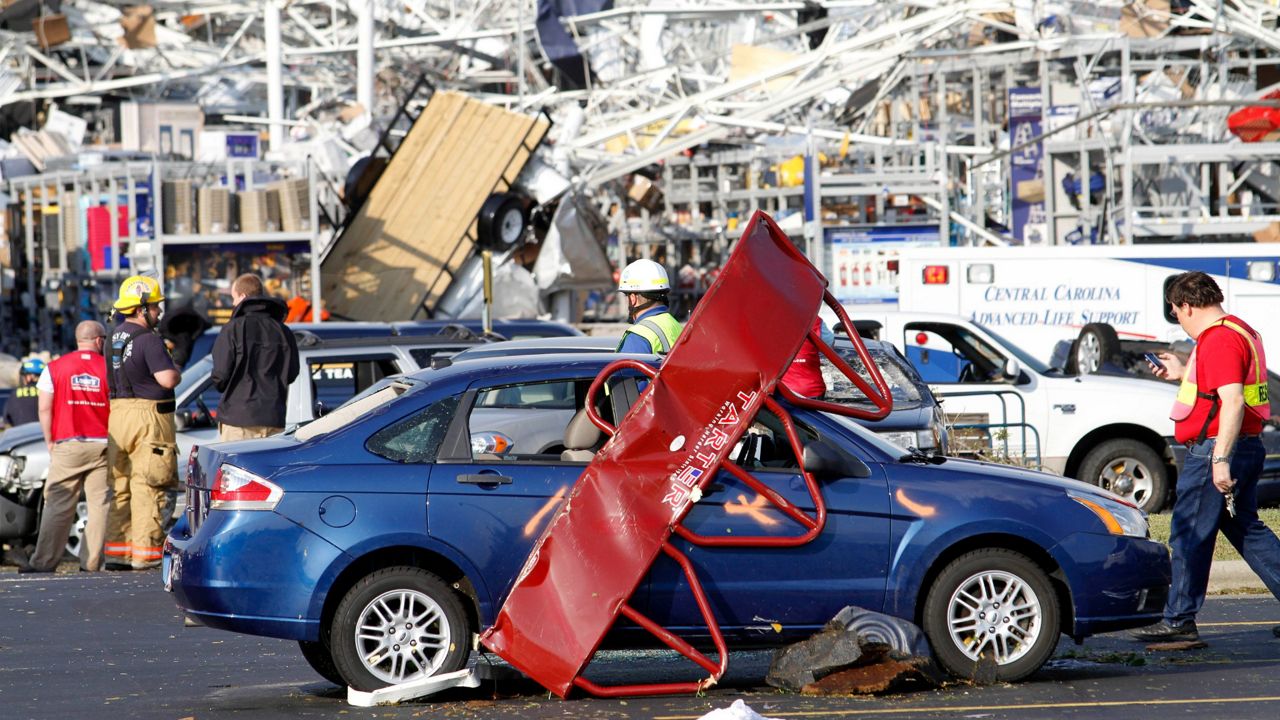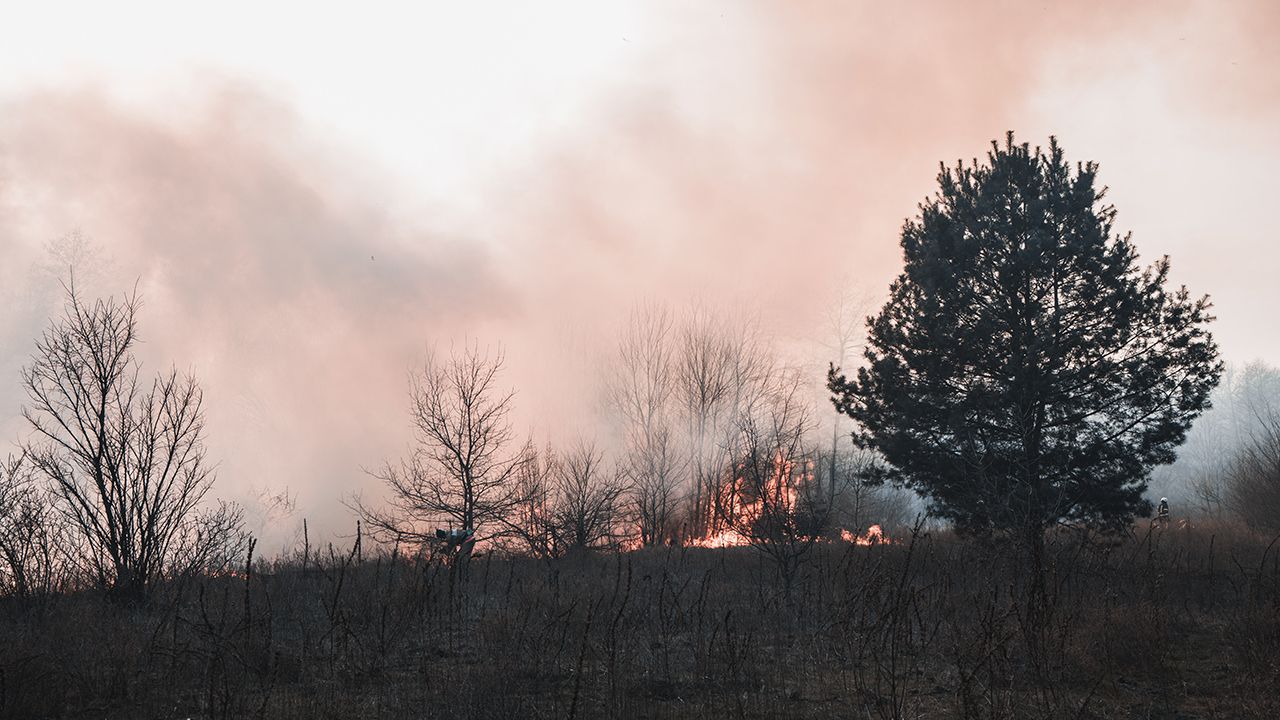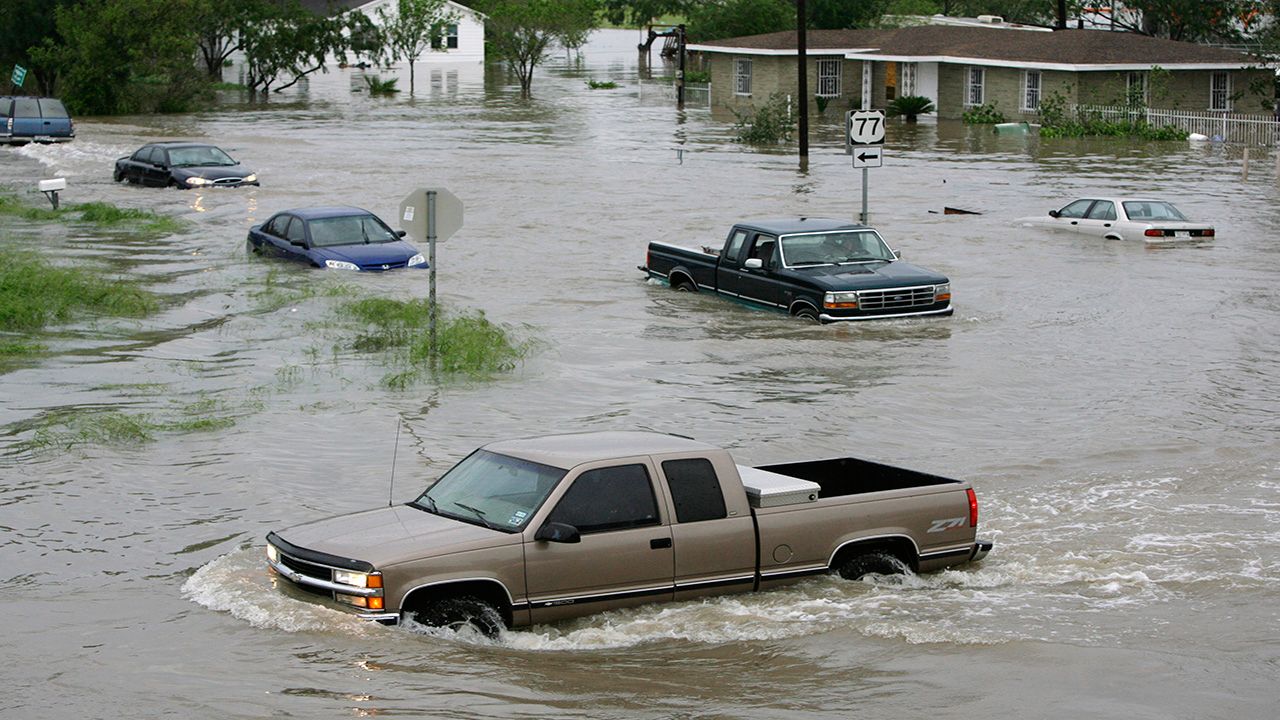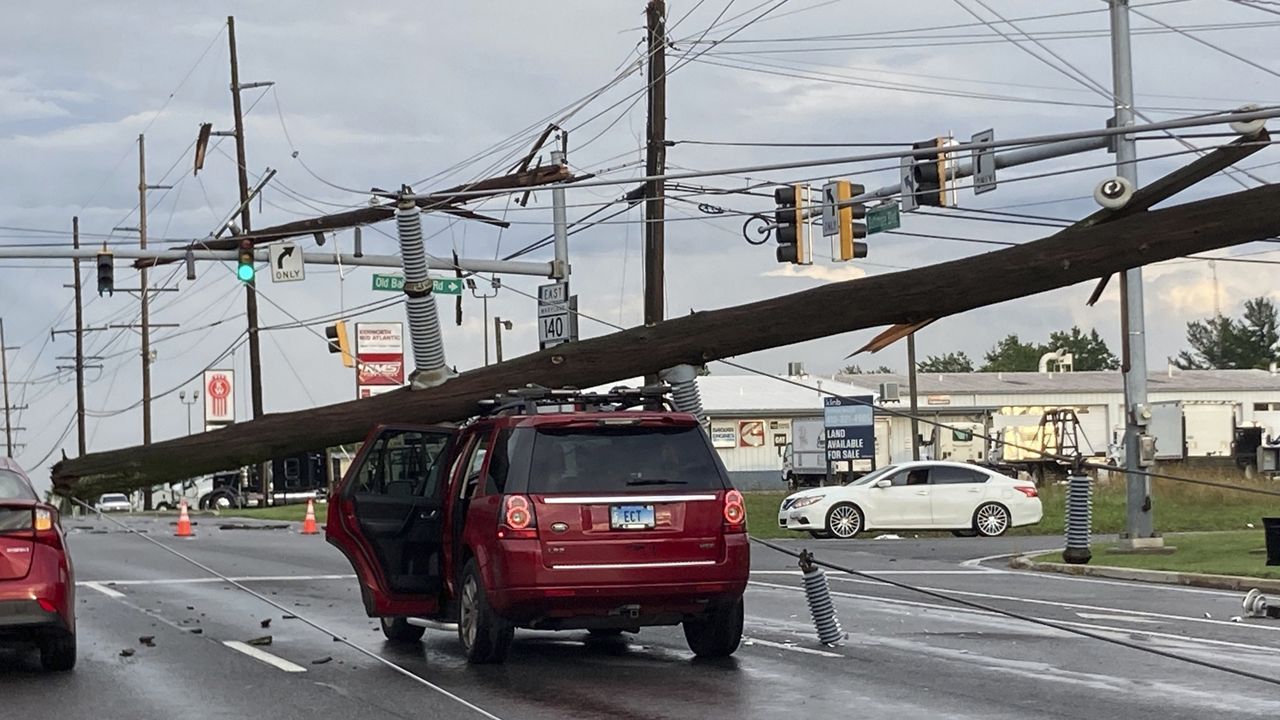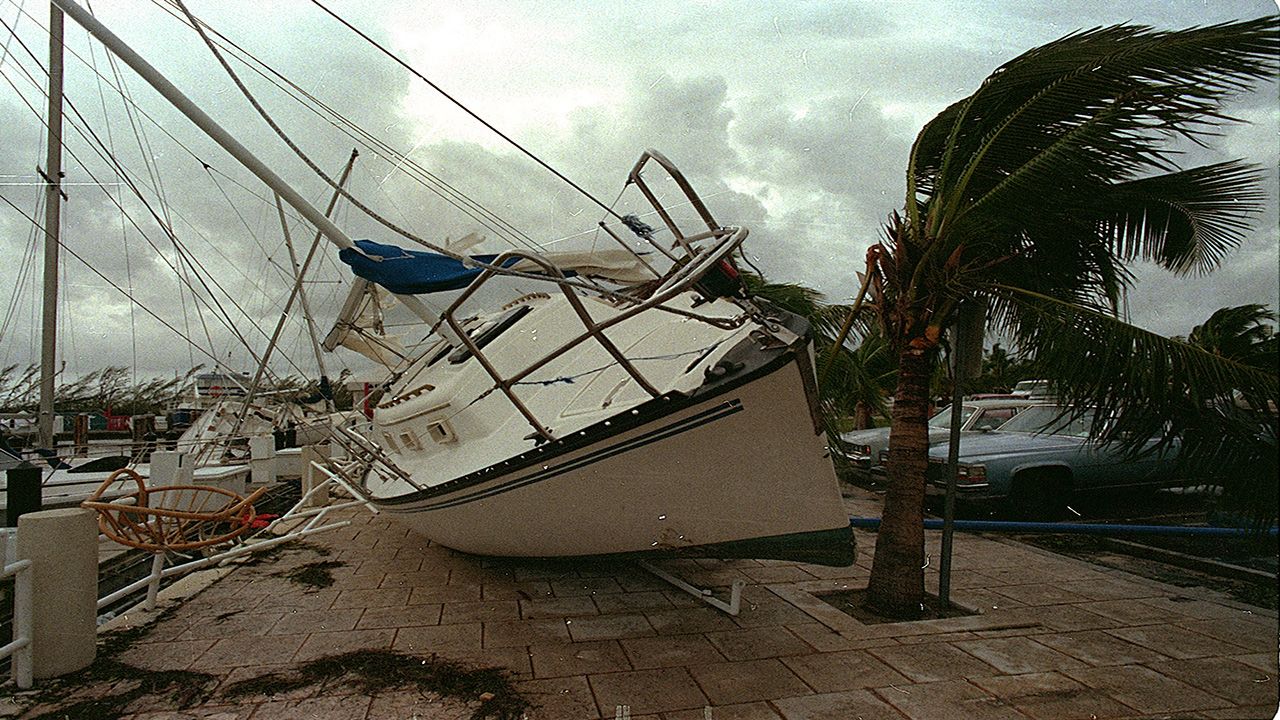Tornadoes are a common weather phenomenon that occur year-round. We see them from the severe season in the spring and summer to the second severe season in the late-fall months.
They also occur when hurricanes bring severe thunderstorms onshore.
But, how exactly are tornadoes rated, and what do those ratings mean?
Unlike hurricanes, which are rated by their wind speeds, tornadoes are rated by the damage they cause. After a tornado occurs, the National Weather Service or emergency management assesses the damage to determine its rating.
The ratings are associated with the wind speeds in the chart below.
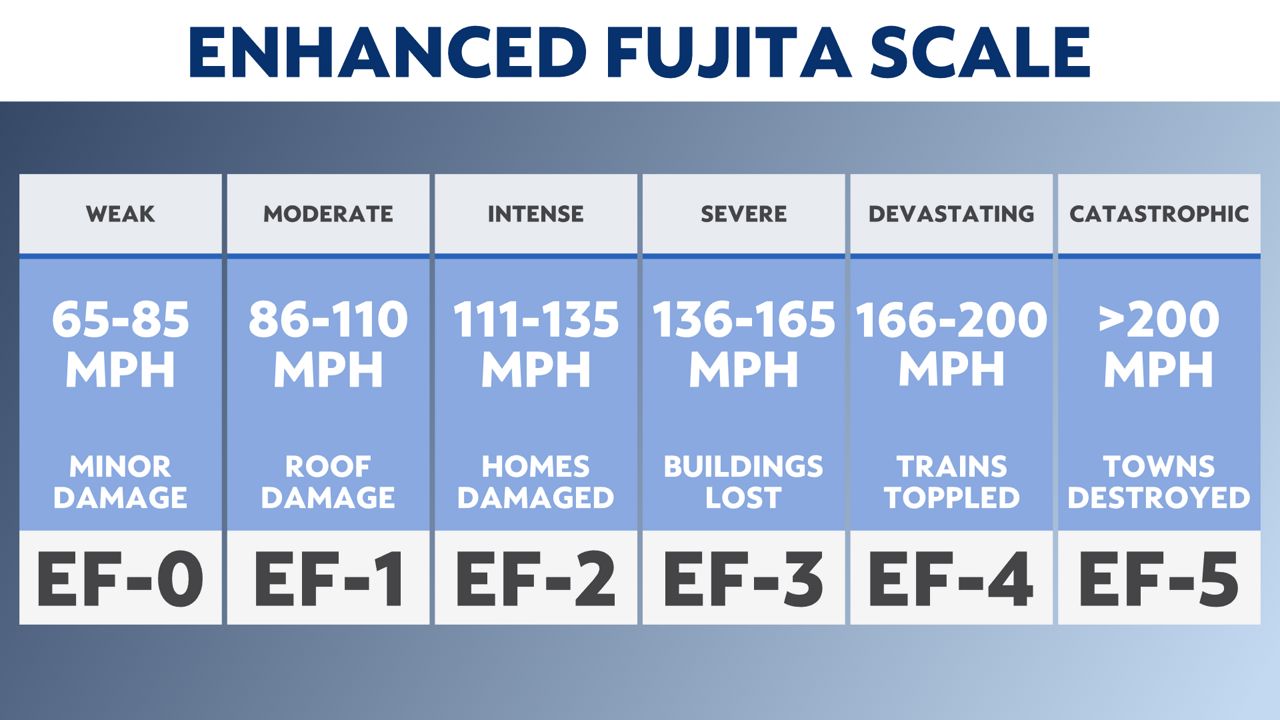
Let's break down what damage we typically see with each rating.
An EF-0 is typically associated with minor damage.
We can expect to see some damage to homes, mainly minor damage to chimneys.
Branches can be broken off trees, and shallow-rooted trees can be blown over.
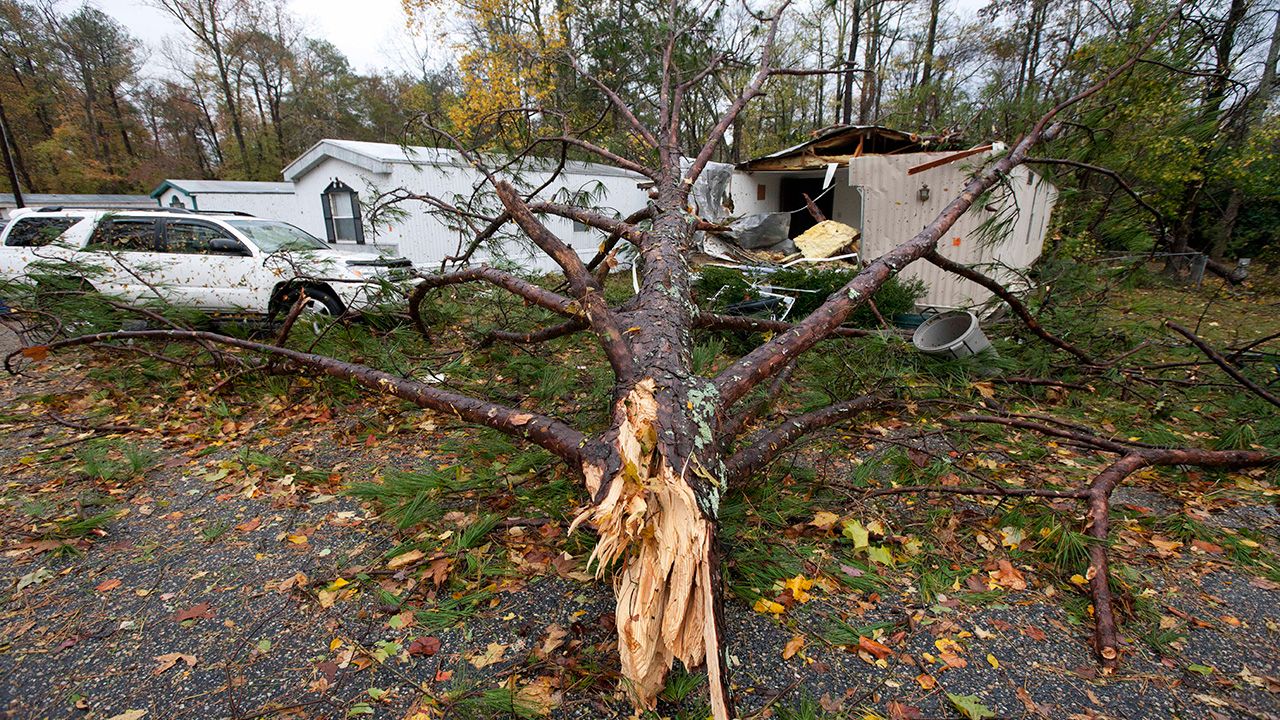
With an EF-1 rated tornado, damage increases for a home.
The surface of a home's roof can be peeled off.
Mobile homes can be pushed off foundations or turned over, and moving vehicles can be blown off roads.
Next on our list is an EF-2. An EF-2 can cause considerable damage.
Framed homes can have their roofs peeled off, and mobile homes can be demolished.
Light objects can be flown around and turned into missiles, and winds can even lift cars off the ground.
These strong tornadoes can even snap or uproot larger trees.
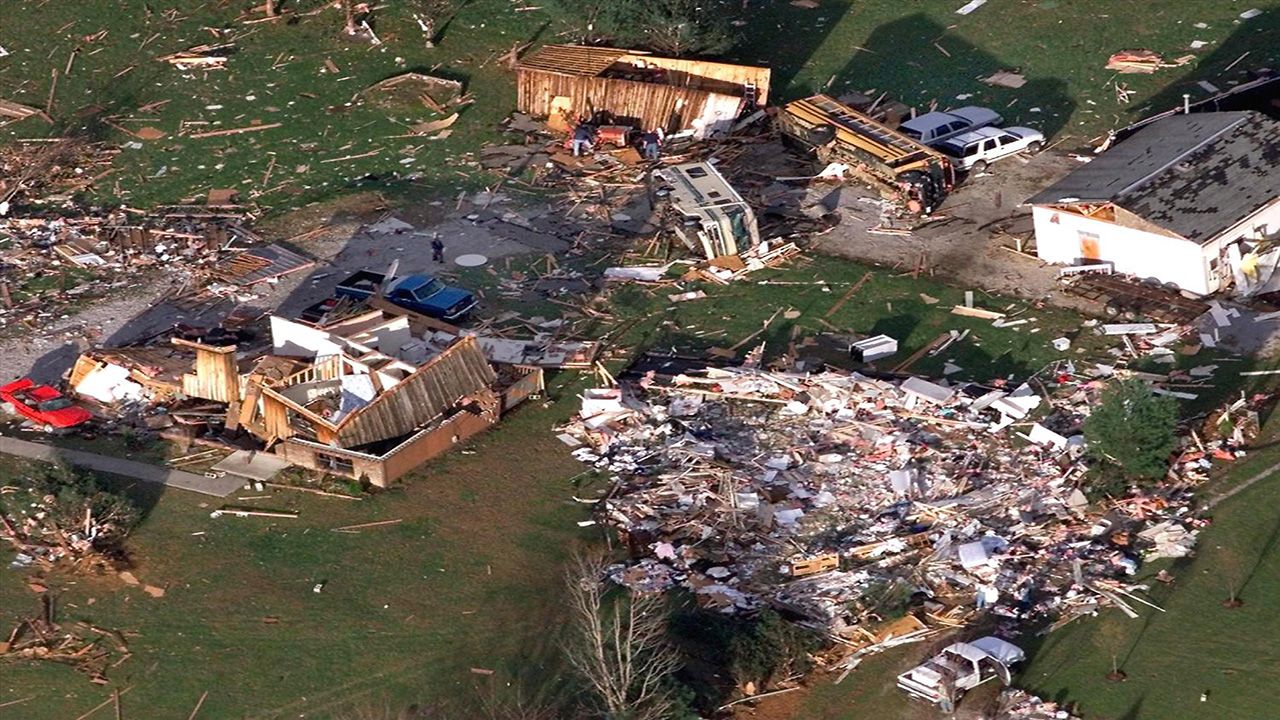
Severe damage can come with a tornado that is rated as an EF-3.
This is when damage can become quite extensive. Well-constructed homes can have roofs and walls torn off.
The winds can overturn trains and throw cars through the air.
An EF-4 tornado causes devastating damage.
These tornadoes can flatten well-constructed homes and actually toss homes with weak foundations.
The winds can throw cars and other heavy objects around like missiles. These missile-like objects can turn destructive and deadly.
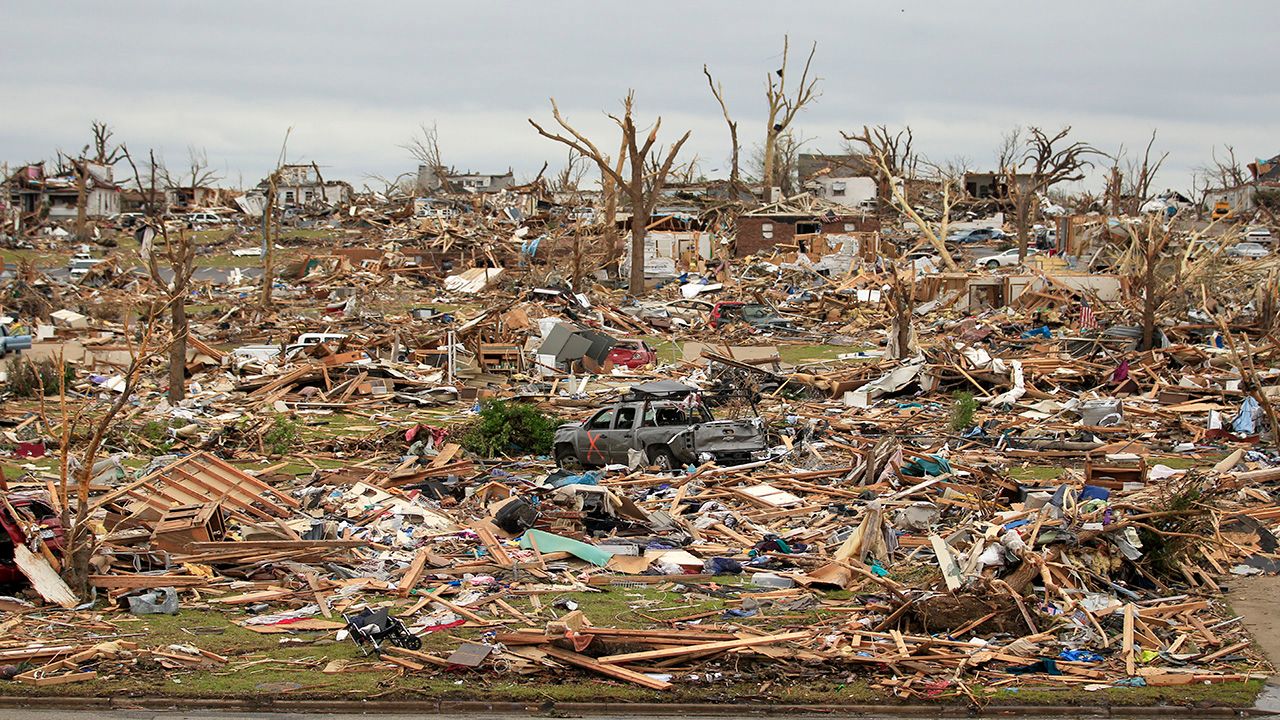
The last on our list is a tornado that is rated as an EF-5.
EF-5 tornadoes cause incredible damage. Wind speeds are equivalent to an extremely strong Category 5 hurricane.
Very few homes can survive a direct strike from an EF-5. These tornadoes flatten even strong-framed houses and sweep them from their original location.
The winds that top 200 mph can throw large vehicles up to 100 yards or the length of a football field.
Tornadoes can turn any day of the year into an extremely scary situation, but with early preparation, you and your family can be better prepared for when a tornado touches down in your area. Remember, no matter the rating, all tornadoes are dangerous.
Here are some tips to help get your plan ready:
- Have an emergency kit handy just in case a friend or family member gets hurt. With debris on the roads, emergency responders can take extra time to get to your location.
- Make sure everyone knows the safe location in your home. If you live in a mobile home, know where to go when severe weather moves into your area.
- Have different ways of communicating with friends and family other than a cell phone.
- Have a meeting place in case you and your loved ones are separated.
